Meet the Ansel Adams of Liquor Store Photography
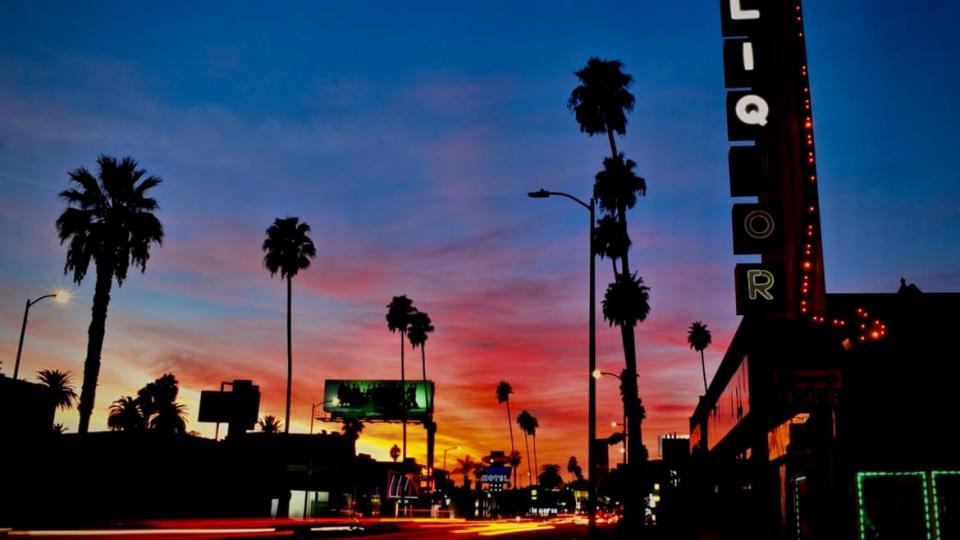
Next time you fly into Hollywood Burbank Airport glance out the window as you descend along Victory Boulevard and you’ll see colorful liquor store neon signs through the smog.
During the day these weathered displays covered in pigeon droppings form a fossil-like middle finger pointed at the big-box stores across the street. But when the sun goes down they’re transformed. Drive around at night and you can be a Gene Hackman cosplayer from Night Moves or Elliott Gould in The Long Goodbye.
Meet Dale DeGroff, the Father of the Rebirth of the Cocktail
Building a Whiskey Empire in 85 Years
It’s these neon signs, often with a few burned-out letters, juxtaposed against those toxic but epic Los Angeles sunsets that give a neighborhood its character. And while they’ve survived riots, earthquakes and even the Zima craze, the new age of point, click and drone deliveries will eventually bring their demise. One day Pixar will make a movie about a bunch of old liquor store signs piled up in a junkyard plotting revenge against the Targets and Walmarts that put them out of business…but, of course, for kids.

What got me started taking photos of liquor stores I think was as simple as playing around with my camera and digging the results of a liquor store photo I once took. The noir quality is what hooked me and I’ve since taken hundreds of others. I imagine my reaction to looking at a partially burned out liquor store sign in Van Nuys as wondrous as Ansel Adams the first time he trained his lens on Yosemite at sunrise.
The advantage of having liquor store signs as my muse and living in LA is that in California there’s a never-ending array of humming neon deep into the night. There are so many, in fact, I published a coffee-table book, Liquor Stores and Detours, filled with my photos.
Here are five of my favorite images from my book and a bit of the back story of each.
Ringside Liquor
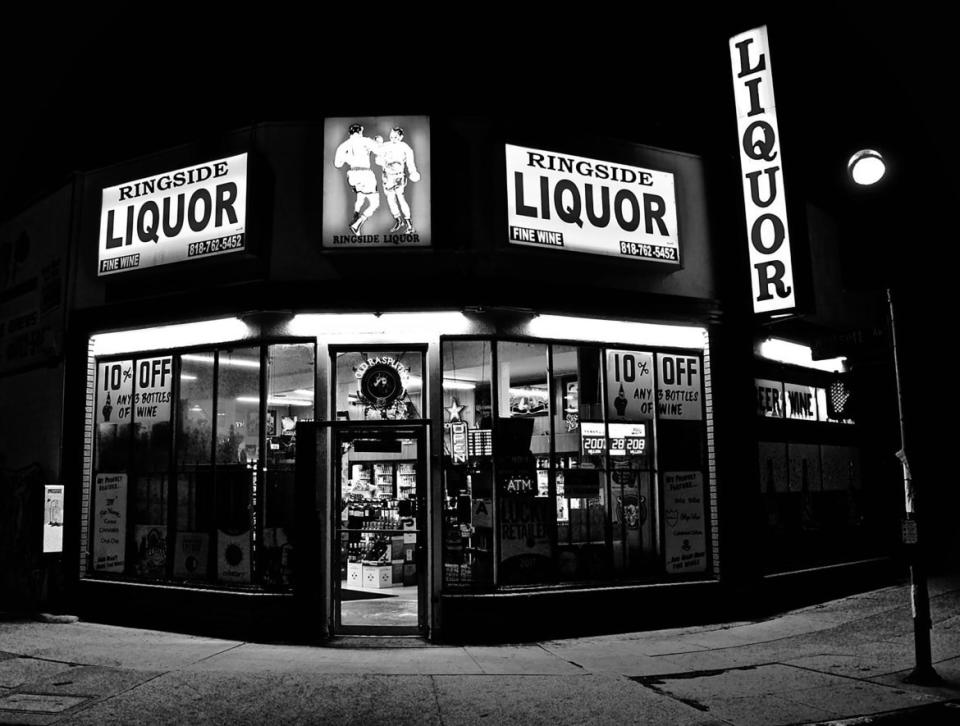
I ask myself five questions before I shoot a liquor store in black and white.
Could Ed Wood purchase a bottle of Four Roses Bourbon while wearing an Angora sweater and not raise any suspicion?
Are the parking lot acoustics perfect for Quint from Jaws to sing a sea shanty?
Has this liquor store inspired Warren Zevon to write a song about it?
Is there an autographed photo of Wally George on the wall?
Is this where Easy Andy from Taxi Driver goes to restock on merch?
Let’s just say Ringside Liquor aced the test.
NoHo Beer & Wine
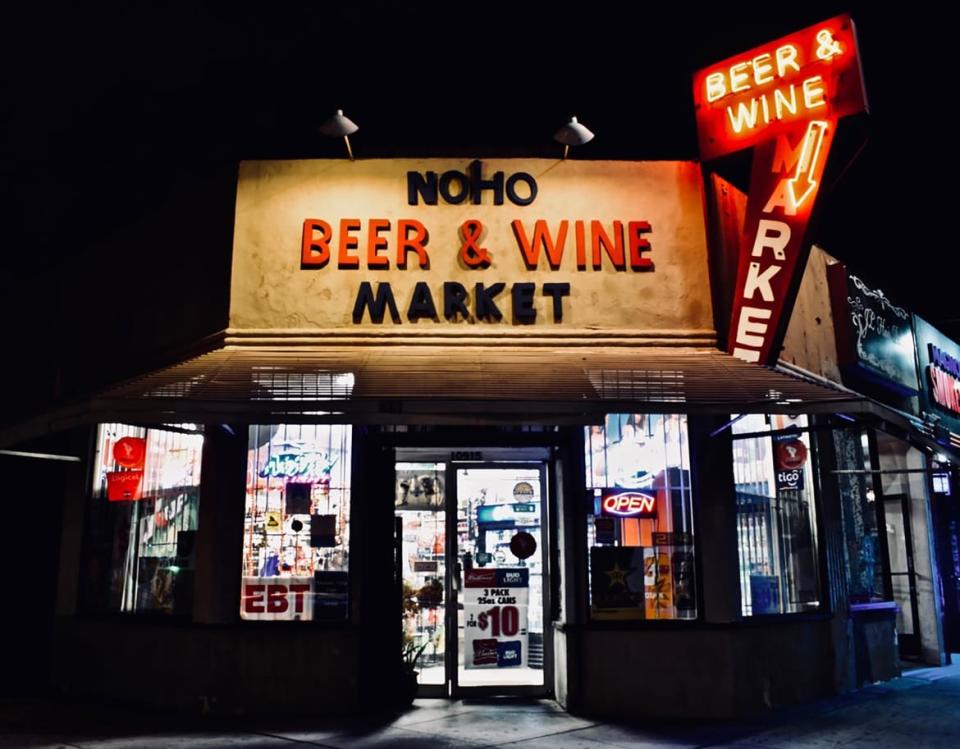
Since I started photographing liquor stores, it’s become a hobby of mine to look for them in old movies and TV shows, like CHiPs or Starsky & Hutch. Quentin Tarantino stylishly recreated entire streets around LA for Once Upon a Time in...Hollywood and it was great to see them elevated to their vintage glory. But let’s face it, even in their glory days liquor stores didn’t have much going on cinematically and I fear every time I pass a liquor store and see camera trucks parked out front a scene like this is playing out inside:
Camera trucks are parked in front of NoHo Beer & Wine. Teamsters mill about carrying light stands and cable. At the craft service table an exhausted director fills up a large cup of coffee. He lumbers into the store, a long night shoot ahead. He pauses next to the director of photography (DP), adjusting the camera.
DIRECTOR: How we looking?
DP: We’re ready. Got that medium shot locked in.
The director peeks through the lens as the DP yawns. The director shrugs, satisfied.
DIRECTOR: All right, let’s do this.
The DP looks through the lens once more, spots something.
DP: You know, this could be 48 hours of no sleep talking, but see the convex mirror above the counter? I like that fish-eye reflection. What if we start there and pull back to the medium shot.
The director looks through the lens and nods.
DIRECTOR: That’s not bad. After all, we’re going into a dream sequence, aren’t we? Maybe blow out the focus…
DP: Like Fellini did in 8 1/2?
DIRECTOR: Actually I was thinking about the dream sequence Ingmar Bergman did in Wild Strawberries, but that’s a good analogy.
A gaffer listening close by approaches.
GAFFER: If you want I can bounce a reflector off that mirror and create a starburst halo effect. There are religious undertones in the story and it would be an inventive way to explore that cinematically.
DP: Like Wim Wenders did in Wings of Desire, though I think it should be more understated.
GAFFER: Yes, a more subtle neorealism, like Umberto D.
DIRECTOR: Why don’t we just shoot the entire first half of the scene into the mirror, like the snow globe from Kane. Then quickly zoom out, that way showing the duality of fantasy and realism. Let’s not forget, aside from religion, there are themes about civil breakdown among the classes we can articulate through the lens.
GAFFER: All the more reason to play with the shapes in the mirror, the audience would be watching a reflection of their own values being distorted. Like François Truffaut did so well.
DP: I’ll use my macro lens. I did my thesis on Truffaut.
DIRECTOR: I think we can not only tell our story more effectively but also use the mirror as a parable that works on numerous levels—like the nitroglycerine in The Wages of Fear.
DP: We can even play with shadows, creating a two-dimensional frame yet maintaining the dignity of our protagonist. The shadows alone become their own character playing the threads of the story like the zither that opens The Third Man.
DIRECTOR: Especially if we capture it from a low angle. You know, Gregg Toland once said…
Off camera, the first AD yells out: “Actor on set!”
Rob Schneider enters the liquor store dressed as a poop emoji.
ROB: Hey guys, let’s shoot this damn thing, I’m chaffing.
The director, DP, and gaffer exchange a look.
DIRECTOR: Just lock in that medium shot.
DP: Gotcha.
GAFFER: Yeah.
The gaffer walks away. The director sits in his chair and takes a long swig of coffee.
Mojave Liquors
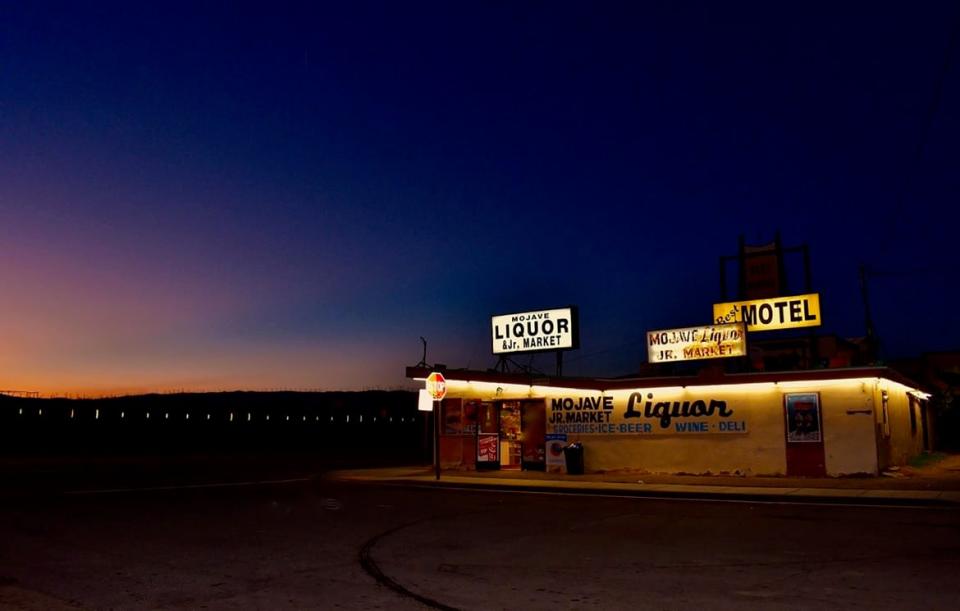
For all the nostalgia that give urban liquor stores their timeless charm, desert liquor stores might be my favorite. They all look like set dressing in a Sam Shepard play. Mojave Liquors, located at the edge of Death Valley, is like an outpost Randolph Scott leads settlers to on the way to Area 51. The oddest sight in this photo is the wind farm on the hillside above, keeping all the dust and memories of this forgotten town from escaping.
Liquor Fountain

I try very hard to photograph the liquor stores with empty parking lots. An empty parking lot adds a sense of mystery to the photos, especially at night. But every now and then I get lucky and find a classic car parked in front of a store and it’s like stepping into a time machine. I once waited 10 minutes for a Honda Civic to leave a spot only to watch a classic Chevrolet pull in and suddenly the photo became a Tom Waits album cover.
Liquor Fountain is a quaint little store on a quiet street in East Hollywood. One night I was passing by and spied a vintage station wagon in the parking lot. Luckily, I had my camera with me. The caption in my book states: “It looks like the Brady Bunch on their way to the Grand Canyon after picking up Rutger Hauer from The Hitcher.”
Pla-Boy Liquor
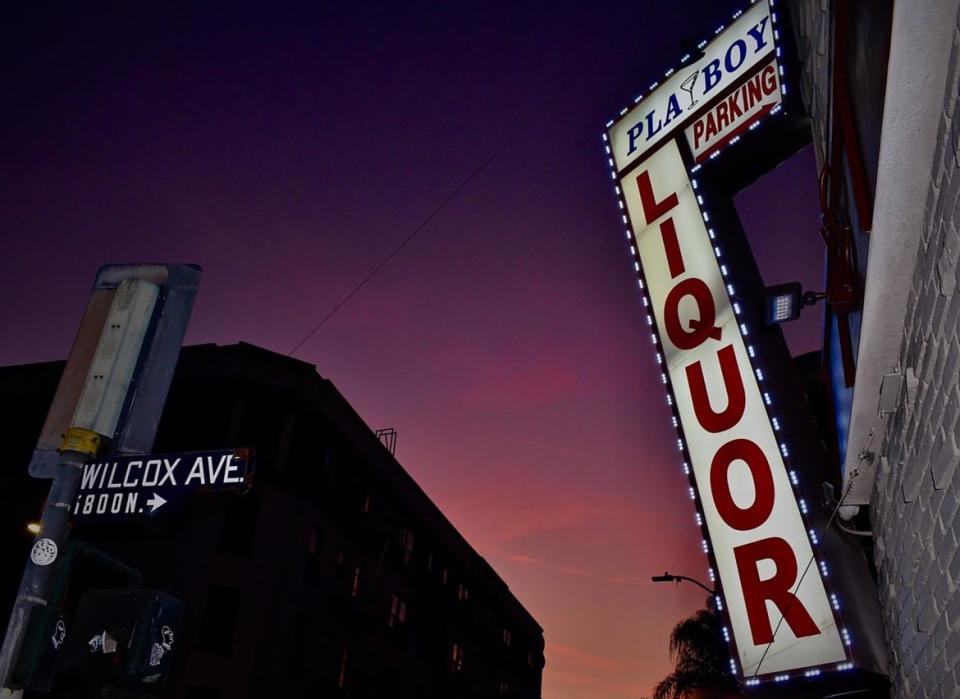
I don’t usually go inside the liquor stores I take photos of, yet when I do, I’m fascinated by the bizarre items I find for sale. After getting my shot of Pla-Boy Liquor, I went in to buy a bottle of water and spotted a pile of individually wrapped MoonPies for sale. Who still sells MoonPies? I’ve even seen Bud Light Lime stacked next to a bottle of 25-year-old Pappy Van Winkle.
I have an irrational theory that the reason LA liquor stores continue to thrive despite the onslaught of online sales is that they’re all fronts for a shadowy crime network. A certain purchase at a certain time of night is like a key that opens a secret world where anything is possible. Buying a snack cake is like a signal you need a gun professionally cleaned, or asking the clerk you’re desperate for a bottle of Löwenbräu is the code for getting a body disposed of. Can’t get the covid vaccine? Just buy a Zagnut bar.
But seriously, don’t sleep on your local liquor store. When all the big chains ran out of toilet paper and hand sanitizer last year, I could always find some in my local liquor shop…plus a nice 12-year-old Weller to help make the lockdown a bit more tolerable.
You can buy Matt Oswalt’s book, Liquor Stores and Detours, and prints of his photographs on his website.
Get our top stories in your inbox every day. Sign up now!
Daily Beast Membership: Beast Inside goes deeper on the stories that matter to you. Learn more.

 Yahoo Movies
Yahoo Movies 